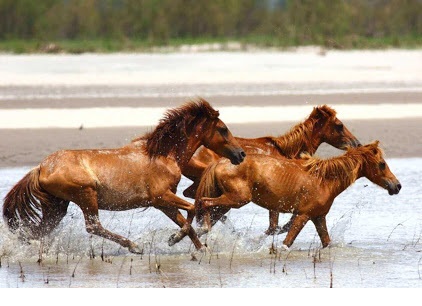Deepor Beel Bird Sanctuary represents a remarkable ecological treasure nestled in the Kamrup Metropolitan district of Assam, embodying a complex and vibrant wetland ecosystem with profound environmental significance. Its origins trace back to a former channel of the Brahmaputra River, creating a unique landscape that sustains an extraordinary array of biodiversity and supports multiple ecological functions.
The sanctuary's ecological importance is deeply intertwined with its historical recognition, having been declared a wildlife sanctuary in 1989 and subsequently designated as a Ramsar site in 2002. This international acknowledgment underscores its critical role in preserving avian habitats and maintaining regional environmental balance. The wetland serves not just as a natural habitat but as a complex ecosystem supporting over 200 bird species, including numerous migratory visitors that make this sanctuary their temporary home.
Geographically, Deepor Beel presents a fascinating mosaic of habitats—ranging from deep open water areas to marshy lands and wet grasslands. This diversity creates a rich environmental tapestry that supports an intricate web of life. The beel functions as a natural storm water detention basin for Guwahati city, demonstrating its vital role in urban ecological management and flood mitigation strategies.
Local communities share a deeply symbiotic relationship with this ecosystem. Fishing represents a primary livelihood for approximately 800 households, embedding the sanctuary within the socio-economic fabric of the region. The Deepor Beel Fishermen's Cooperative Society exemplifies this connection, with members committed to preserving the wetland that sustains their economic activities and cultural heritage.
Environmental challenges have increasingly threatened this delicate ecosystem. Wastewater inflow from Guwahati city has degraded water quality, posing significant risks to aquatic flora and fauna. Conservation efforts have thus focused on managing encroachments, restoring surrounding forest areas, and implementing strategies to protect the beel's ecological integrity.
The sanctuary's recognition as an Important Bird Area by BirdLife International further emphasizes its global ecological significance. Migratory and residential bird species find sanctuary here, making it a critical node in regional and international avian conservation networks. The changing water regime throughout the year creates dynamic habitats that support this rich biodiversity.
Restoration and conservation initiatives have become increasingly sophisticated, targeting not just immediate ecological preservation but long-term sustainability. Strategies include restricting land cutting, preventing industrial development in peripheral areas, and creating additional storage capacity to maintain the beel's natural hydraulic characteristics.
Deepor Beel stands as a testament to the delicate balance between human needs and ecological preservation. Its story is one of resilience, adaptation, and the complex interactions between natural systems and human communities, offering a powerful narrative of environmental stewardship in the heart of Assam's landscape.








